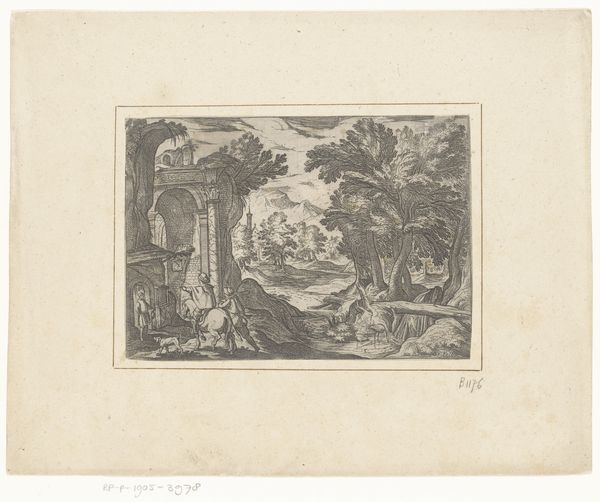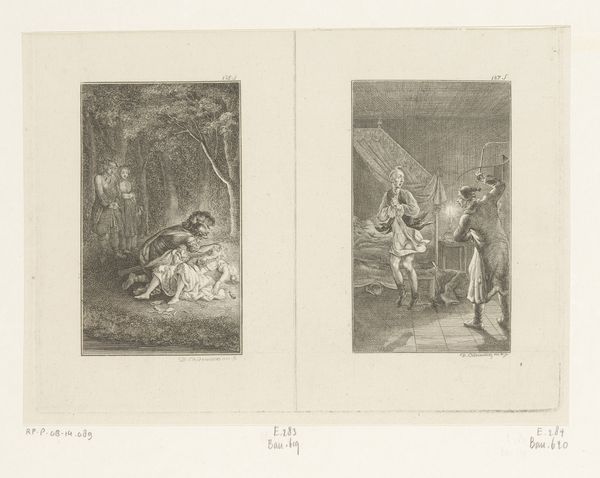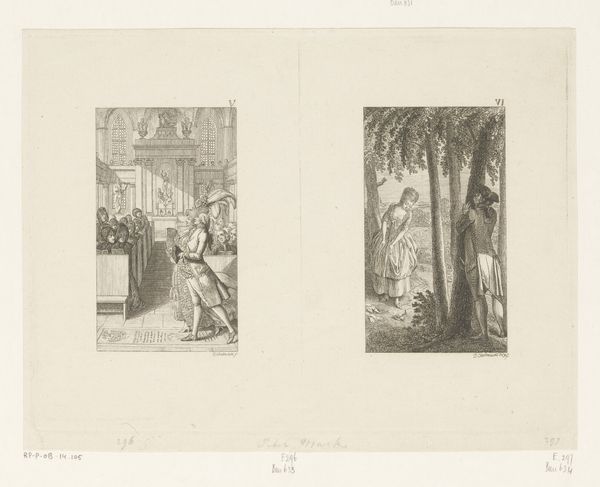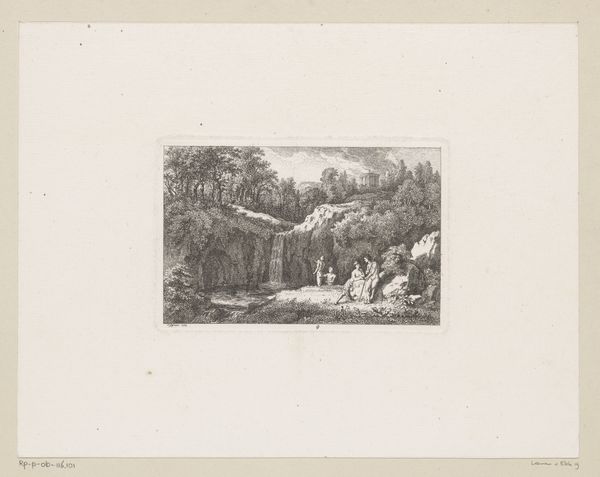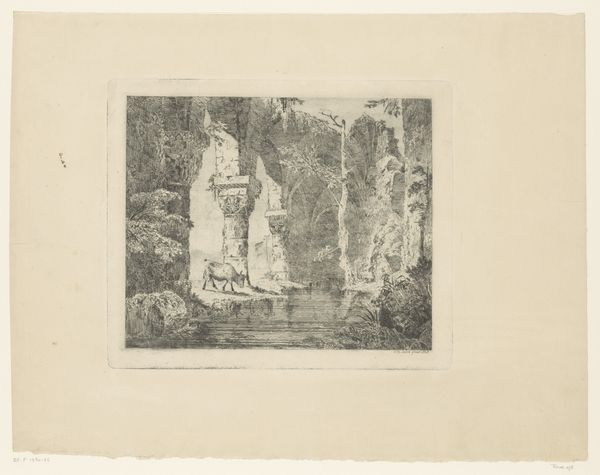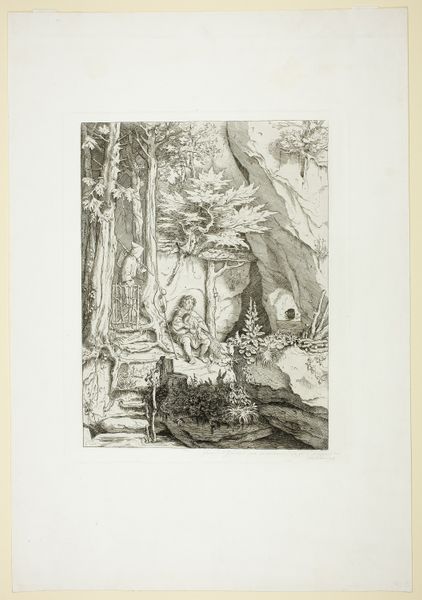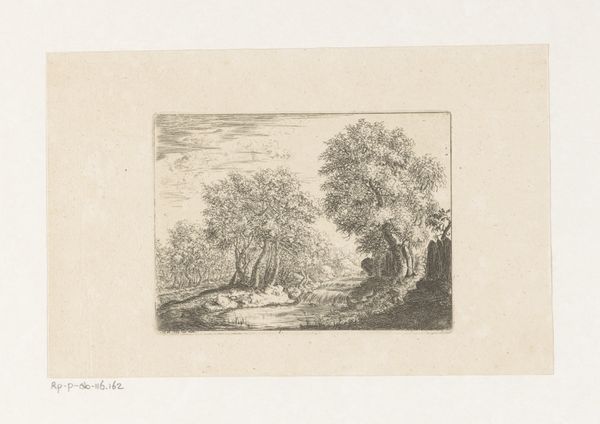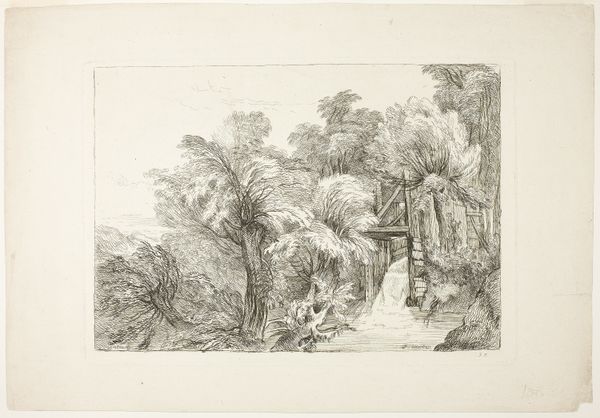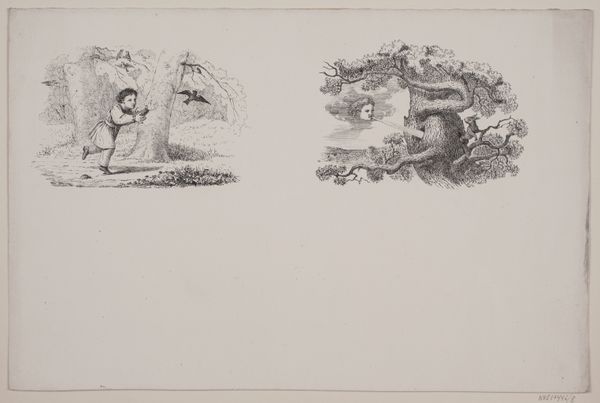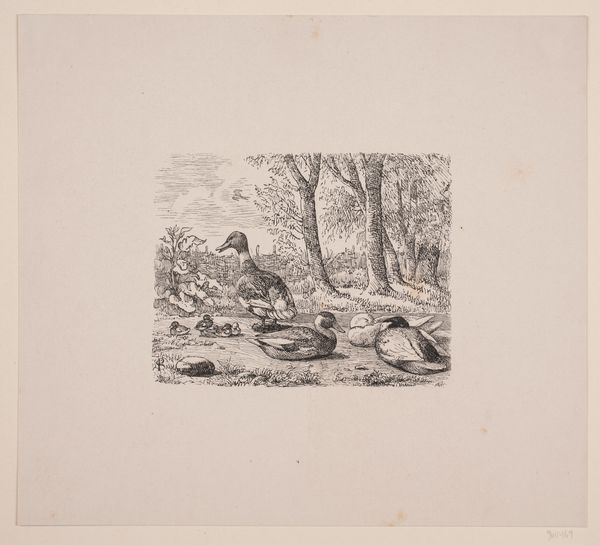
drawing, paper, engraving
#
drawing
#
neoclacissism
#
allegory
#
landscape
#
figuration
#
paper
#
engraving
Dimensions: height 200 mm, width 252 mm
Copyright: Rijks Museum: Open Domain
Curator: This artwork, titled Historia en Natura, created by Daniel Nikolaus Chodowiecki in 1771, showcases his skill in engraving. Look closely, you can appreciate all those details made with fine lines. It's currently held here at the Rijksmuseum. What's your first impression? Editor: It feels… fractured, almost like two distinct thoughts or scenes placed side-by-side. There’s a serenity on the left with the pensive woman, juxtaposed with what appears to be a more animated depiction of… paradise? Curator: You picked up on something key: this work represents two sides of nature through allegory, common for Neoclassical artists. On the left, a woman – likely representing history – records observations in a book next to a monument; and to the right we can see Adam standing within creation. Editor: It strikes me that the left panel, with the historian, places humanity in the role of observer and recorder of nature, an intellectual endeavor. The right seems to position humankind directly within nature, part of its flourishing, but somehow centered as well. Do you think Chodowiecki implies a power dynamic? Curator: Maybe, but I read that centering as a more innocent one. Remember, for some Neoclassical thinkers, humanity was meant to understand and perhaps even gently guide nature, always using knowledge wisely to preserve. The monument, adorned with flowers, reinforces this. Also, note that animals on the right panel appear friendly towards Adam. Editor: I am curious as to the whiteness of all the human subjects; does the whiteness emphasize an assumed dominion over the natural world and the authority to document its existence in history? It almost romanticizes the domination through rational observation, creating, thus, another colonial project? Curator: I guess you have a point. I hadn't looked at it from this specific lens but I can imagine Chodowiecki wanting to offer the world as ordered by European views, you know. After all, who decides what parts of "history" go down in the books? Editor: Precisely! So this piece asks us to question not only what we document, but why, and whose perspective is deemed “historical”. Food for thought on seemingly innocent representations of nature, no? Curator: Absolutely! Each viewing unveils something new. I appreciate seeing your view.
Comments
No comments
Be the first to comment and join the conversation on the ultimate creative platform.
